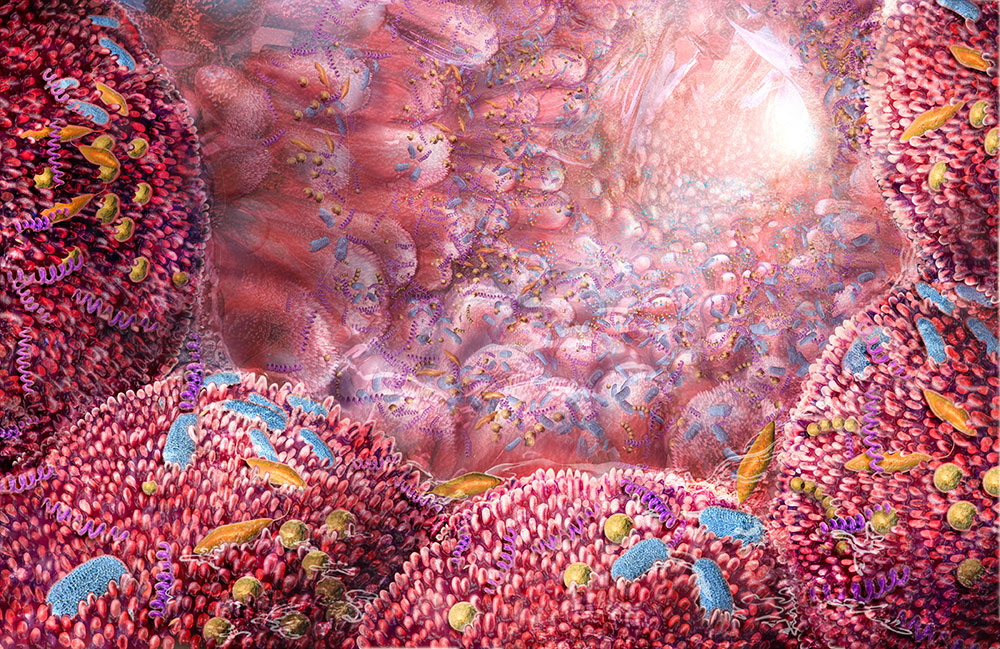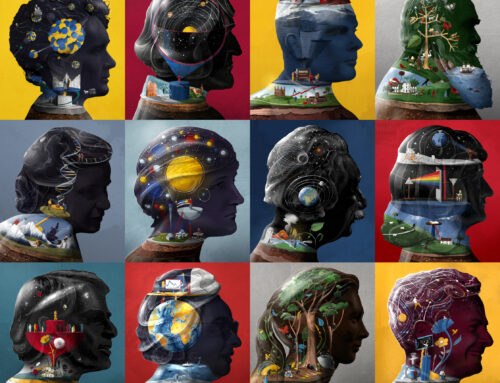Artwork created by Nicolle Rager Fuller exploring health, disease, and cancer. The stunning illustrations below depict microbes in our gut, cancer cells migrating from the tumor and flow detection by the kidney.
To see more work from Nicolle Rager Fuller, please visit her DOI portfolio and website.

Therapeutic antibodies (the Y-like structures) can work to help fight off growth factors which fuel cancer cell growth. ©Nicolle Rager Fuller

A primary tumor within the colon metastasizing. During metastasis, tumor cells produce proteins, called proteases, which helps degrade the tissue around them. At the same time, the tumor cells stop producing the proteins that normally keeps them tightly connected and contained. These processes allow the tumor cell to infect distant sites through intravasation ©Nicolle Rager Fuller

An artistic look deep within our intestine where a thriving ecosystem of microbes lives. Contrary to what one might think, these microbes are beneficial to us and help us digest our food. Otherwise, many nutrients would be indigestible. Subjects: biology, molecular, cells, bacteria, pharmaceutical ©Nicolle Rager Fuller

A tumor attracts blood and lymphatic vessels (known as angiogenesis and lymphangiogenesis, respectively) in order to consume more nutrients to continue its rapid growth ©Nicolle Rager Fuller










